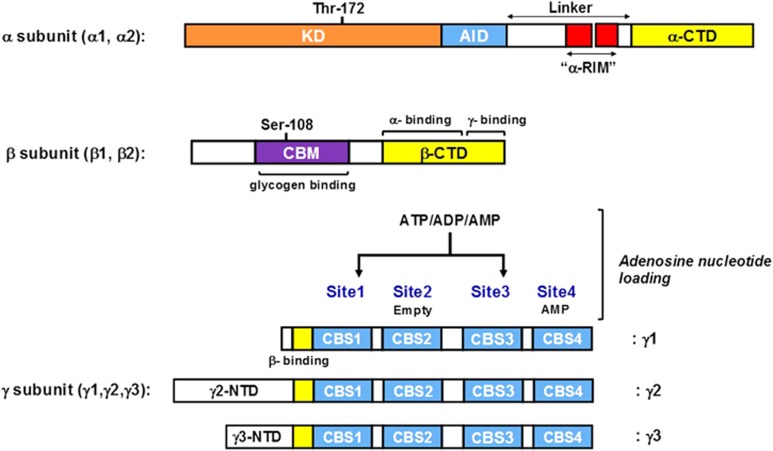Figure 1.
Functional domains of AMP-activated protein kinase (AMPK) subunits. The mammalian α1/α2 and β1/β2 isoforms are very similar, and their characteristic features are shown. AMPKα subunits: KD, kinase domain containing Thr-172 for the activation by upstream kinases; AID, autoinhibitory domain; two α-RIM, regulatory subunit interacting motifs triggering the conformational changes in response to AMP binding to the AMPKγ subunit; α-CTD, C-terminal domain binding to the β-subunit. AMPKβ subunit: CBM, carbohydrate-binding module, in which Ser108 is important for the action of some direct AMPK activators, such as thienopyridone (A-769662) and salicylate; β-CTD, C-terminal domain containing α-subunit-binding site and immediately followed by the domain for γ-subunit interaction. AMPKγ subunit: three γ-subunit isoforms have variable N-terminal domains (NTDs); four CBS, cystathione-β-synthases domain, which forms two Bateman domains that create four adenosine nucleotide-binding sites (Sites 1–4). Site 2 appears to be always empty and Site 4 to have a tightly bound AMP, whereas Sites 1 and 3 represent the regulatory sites that bind AMP, ADP or ATP in competition.

